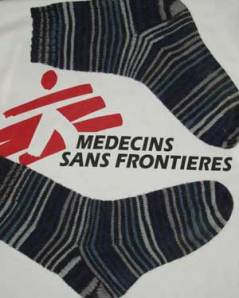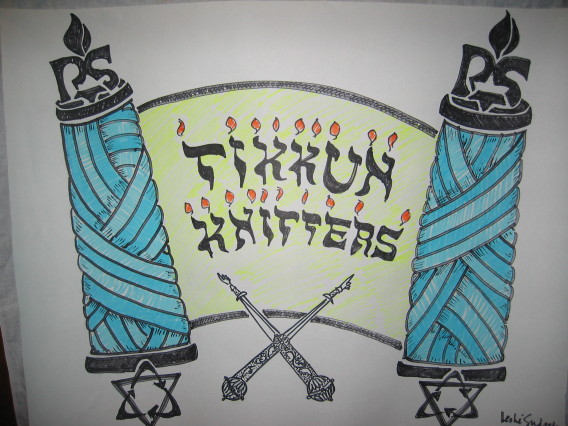Resport on NPR’sMorning Edition this morning (Anne Garrels, Israeli Forces Pulling Out of Gaza, 2:28-4:07) — case that finally prompted public conversation about Israel’s use of excessive force
Dr. El Aish (Palestinian physician from Gaza) – fixture on Israeli TV, believed in co-existence, worked in Israel, spoke fluent Hebrew – nontheless believes in the integrity of Israel’s leaders, their professional and moral capacity to investigate the attack on his home and death of his children, and to speak the truth. He says he hopes his daughters’ deaths are not in vain, that his family’s tragedy will open the eyes and minds of Israelis to what has happened. He wants and investigation.
“I fully believe in the moral [sic] of the Israeli leaders. I count on their professionalism, that they are serious, and they have the courage to say the truth. They committed a mistake.”
Dr. Ish, worked in co-existence projects, three of four daughters killed in Israeli military strike
As tension increases in Gaza between Israel and Palestine, it is important to support and empower long-term peacekeeping efforts. With the recent Israeli violence in the news, now is the time to act. Donate to one of the projects below that address the well-known challenge of sustainable Israeli-Palestinian peace.
Hamsa/Chamsa/Khamsa KAL project? Hamsa leaves …
Doctors Without Borders/Médecins Sans Frontières (MSF) – donate here. International Rescue Committee (IRC) (for medical supplies)
Save the Children has worked in Gaza and the West Bank since the 1970’s (for food, water, and medical supplies)
UN Relief and Works Agency for Palestine Refugees in the Near East (UNRWA) – special Gaza appeal
Global Giving facilitates work of numerous projects leading to sustainable peace in Israel-Palestine. CHF International provides food and water to Gazan civilian, International Medical Corps (IMC) is attempting to provide emergency medical supplies, MADRE, partnered with the Palestinian Medical Relief Society, are trying to bring medical aid to women injured in the conflict.
Other direct contributions to providing relief in Gaza can be made to CARE (for critical food relief),
NIF SHATIL’s southern office staff live in Be’er Sheva , Kiryat Gat, Rahat, Sderot and other communities – all within the range of rocket fire from Gaza. supported relief work of NGO’s
Shatil’s remarkable efforts to make relief management resoures available, facilitate the 450 ngo’s work here, here, and here – SHATIL Be’er Sheva staff is in the process of mapping the war-related needs of 450 non- profit organizations and grassroots groups in the south.
joint protest – 300 Jews and Arabs from the Wadi Ara region of Israel demonstrated against the harming of innocent civilians in Gaza and the surrounding Israeli region. The rally was organized by NIF grantee Awareness for You, which runs empowerment courses for Arab women in the village of Kfar Kara.
Members of the NIF family, in cluding — Adalah: Legal Center for Arab Minority Rights in Israel), Association for Civil Rights in Israel (ACRI),
Bimkom: Planners for Planning Rights, Gisha: Legal Center for Freedom of Movement, HaMoked: Center for the Defence of the Individual, Physicians for Human Rights-Israel * The Public Committee Against Torture in Israel * Rabbis for Human Rights * Yesh Din: Volunteers for Human Rights, B’Tselem The Israeli Information Center for Human Rights in the Occupied Territories
Kol Acher (Other Voice)
supported ACRI’s – work to protect rights of Arab Israelis to protest Gazan violence –
shelter nurseries for children Israeli civilians – might be able to use handmade toys – challenge to find equivalent for Gazan children (hospitals) – in addition to sending cash donations to relief agencies (such as Doctors Without Borders
Read Full Post »







 The broohaha over Sarah Palin’s nomination prompted a brief flight into fanciful crochet, and I spent a few weeks feverishly
The broohaha over Sarah Palin’s nomination prompted a brief flight into fanciful crochet, and I spent a few weeks feverishly  I embroidered as donations to the pool of items auctioned by
I embroidered as donations to the pool of items auctioned by 

 The Beijing Summer Olympics in August inspired nearly four thousand craftspeople to make and finish tens of thousands of projects. As a participant in the “Hat Dash”, I produced five small hats for the
The Beijing Summer Olympics in August inspired nearly four thousand craftspeople to make and finish tens of thousands of projects. As a participant in the “Hat Dash”, I produced five small hats for the 
 I finished a knitted shofar and pomegranate, symbols of the holiday. For Sukkot, I added some new knitted and felted etrogs to our family sukkah, to make the space even more hospitable to visiting interfaith and peace groups. (
I finished a knitted shofar and pomegranate, symbols of the holiday. For Sukkot, I added some new knitted and felted etrogs to our family sukkah, to make the space even more hospitable to visiting interfaith and peace groups. ( I signed on to the project early, claiming the flags of Israel and
I signed on to the project early, claiming the flags of Israel and  Palestine for (for obvious reasons), as well as the flag of Cambodia (in honor of my friend Onn, a survivor of the genocide). I tackled Cambodian flag first in August, exploring ways to translate into knitting the special structural details of the 11th-c.
Palestine for (for obvious reasons), as well as the flag of Cambodia (in honor of my friend Onn, a survivor of the genocide). I tackled Cambodian flag first in August, exploring ways to translate into knitting the special structural details of the 11th-c.  to reflect my understanding of the ways in
to reflect my understanding of the ways in  which these two peoples inextricably bound to the same texts and terrain. I eventually settled on joining the flags by way of the intertwined (cabled) trunk of a olive tree (of life), rather than the conjoined bodies of twins, which is how I’ve formulated the relationship previously (as
which these two peoples inextricably bound to the same texts and terrain. I eventually settled on joining the flags by way of the intertwined (cabled) trunk of a olive tree (of life), rather than the conjoined bodies of twins, which is how I’ve formulated the relationship previously (as  But earlier this week I was amazed to learn that the TikkunTree project has been included among the on the
But earlier this week I was amazed to learn that the TikkunTree project has been included among the on the 

 What conversations about or efforts for mid-east peace might this new growth on the TikkunTree stimulate? For me, renewed effort to find more information about the peacebuilding work in Israel-Palestine. Last week I made time to read all the reports on recent Israeli-Palestinian dialogue projects contained in a recent issue of
What conversations about or efforts for mid-east peace might this new growth on the TikkunTree stimulate? For me, renewed effort to find more information about the peacebuilding work in Israel-Palestine. Last week I made time to read all the reports on recent Israeli-Palestinian dialogue projects contained in a recent issue of 


 Our Passover seder table includes a plate full of the
Our Passover seder table includes a plate full of the 
 But the symbiotic relationship between the life of frogs and the land is seriously threatened in modern times. According to the
But the symbiotic relationship between the life of frogs and the land is seriously threatened in modern times. According to the 


 I’ve been experimenting with variegated wools (Araucania Nature Wool, left), and working on some cabled leaves. Ellen has been knitting – her last skein of Peace Fleece Shaba Green yielded 15 single-layer leaves (right)! I’ve finally managed to persuade her to expand her knitting repertoire, and she’s jumped into a pair of socks (knit on a pair of Size 0 circulars!) with her usual confidence. What a woman!
I’ve been experimenting with variegated wools (Araucania Nature Wool, left), and working on some cabled leaves. Ellen has been knitting – her last skein of Peace Fleece Shaba Green yielded 15 single-layer leaves (right)! I’ve finally managed to persuade her to expand her knitting repertoire, and she’s jumped into a pair of socks (knit on a pair of Size 0 circulars!) with her usual confidence. What a woman!


